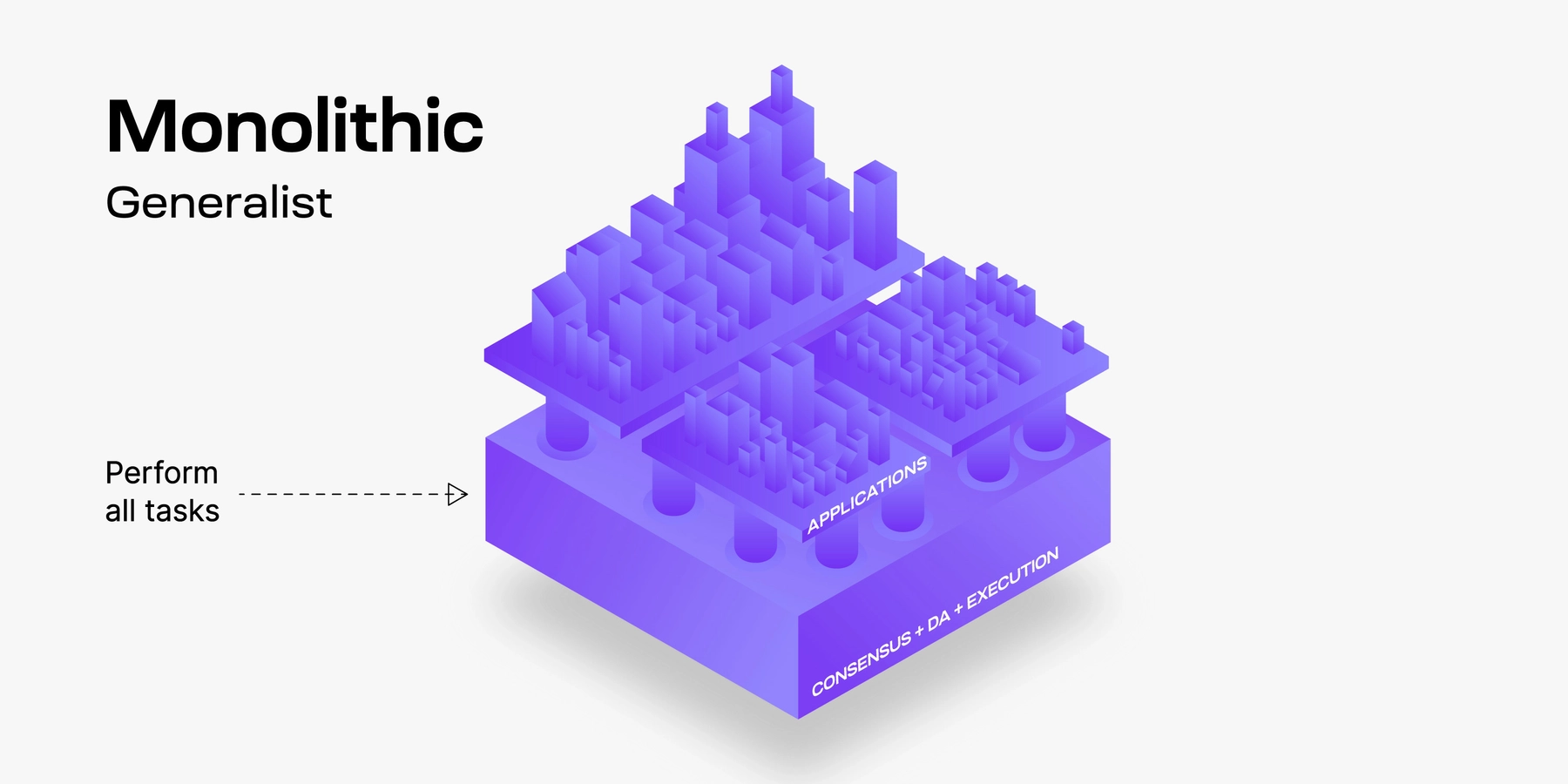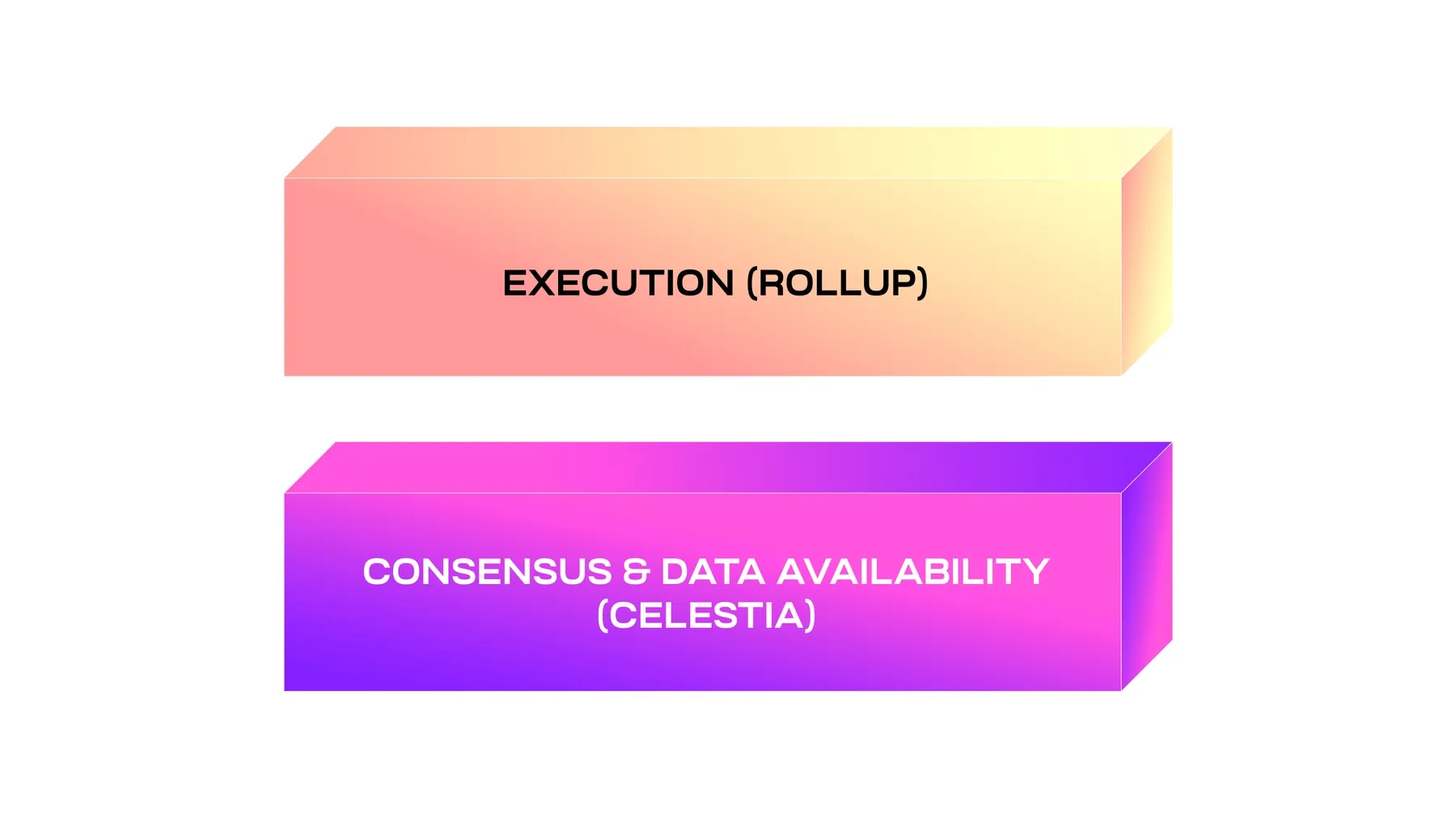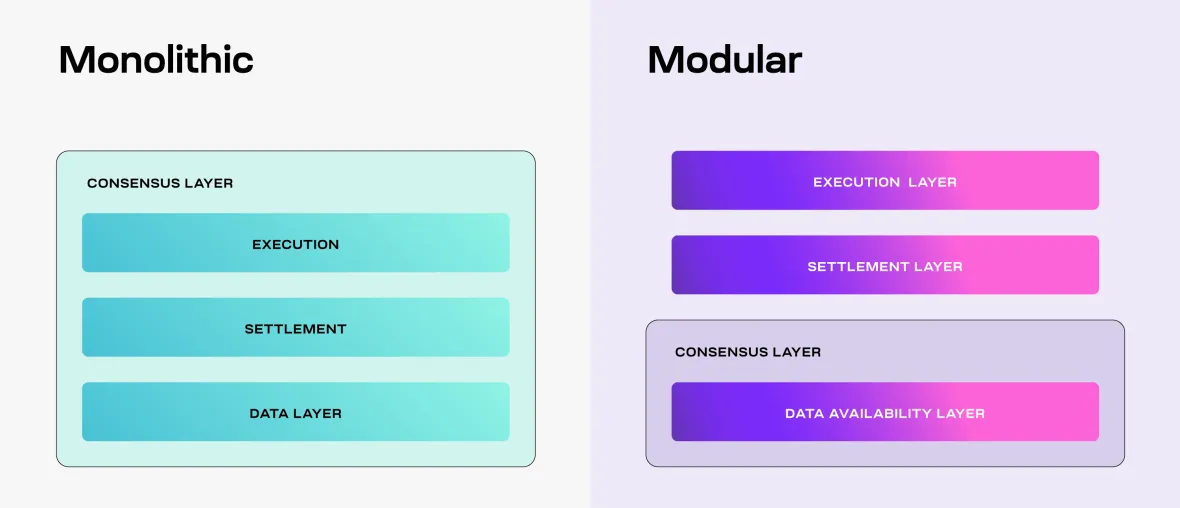#Celestia
Limitations of a Monolithic Block
Most blockchains today are monolithic, so we need to understand what they are before explaining what modularity means.
A monolithic blockchain is a general blockchain that does all the work. In essence, the monolithic approach is “do it all yourself.”

Some blockchains that fall into this category include Solana and Sui.We can’t forget that blockchains were the first big step. They showed us that you could build all kinds of new applications using blockchains. As people started building and using applications on them, they encountered a number of difficulties.
-
Blockchains can handle large transaction volumes, but often require specialized hardware. This increases the barrier to entry and participation requirements for nodes that verify the chain. Over time, this leads to centralization, with only those who can afford the necessary hardware being able to participate.
-
Deploying a blockchain requires the creation of a sufficiently strong set of decentralized validators, which is a challenge.
-
Dapp developers are limited to the pre-defined frameworks/rules of the blockchain they are building on, limiting innovation.
Many of these difficulties make monolithic blockchains difficult to use or ignore the reason why we use blockchains in the first place.
Celestia: The First Modular Blockchain Network

Over the past few years, a new approach to building blockchains has emerged. That new approach is what people call “modular blockchains”. But what exactly are they?
Well, modular blockchains are specialized. They only perform one or two tasks – the opposite of monolithic blockchains.
However, modular blockchains are not stand-alone. Many of them combine to perform all the tasks that a monolithic blockchain performs on its own. This combination of chains is what we call a modular stack.
There may be some unfamiliar terms in the image above, like data availability or execution. Don’t worry. We’ll cover those in future posts.
You can think of modular blockchains as Lego pieces. You can mix and match Legos to create different structures, just like you can mix and match modular blockchains to create different modular stacks.

In the modular category, we have blockchains like Celestia and rollups. Rollups host applications and perform many of the same functions as monolithic blockchains. What makes a rollup modular is that it uses another blockchain, like Celestia, to complete tasks it doesn’t.
As you can see, modular chains specialize and work together to perform all the tasks that a monolithic chain does. If there is one thing you should take away from modular chains and monolithic chains, it is this:
-
Monolithic = generalist
-
Modular = specialist

Why are modular an improvement?
Now you know what modular blockchains are. But how do they improve the challenges that monolithic blockchains face?
Modular chains let you build anything you want
Celestia is really simple for a reason. With no execution, Celestia has far fewer restrictions on how modular applications and blockchains can be built on it. The wide design space includes everything from new virtual machines to unique privacy models and new types of blockchain architectures. That’s just scratching the surface.

Module Chains Let You Build Cheap Apps to Use
And of course, we want to do all of this while keeping the price low enough for users to enjoy using the app.
Data Availability Sampling is the technology Celestia uses to do this. The name may sound confusing. But all it means is that Celestia can provide more capacity to apps





评论 (0)